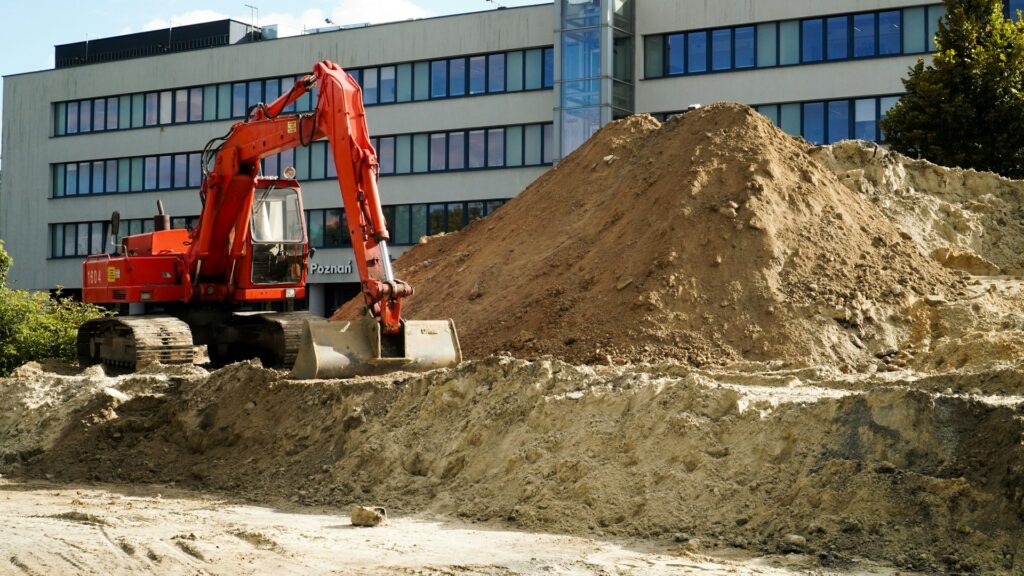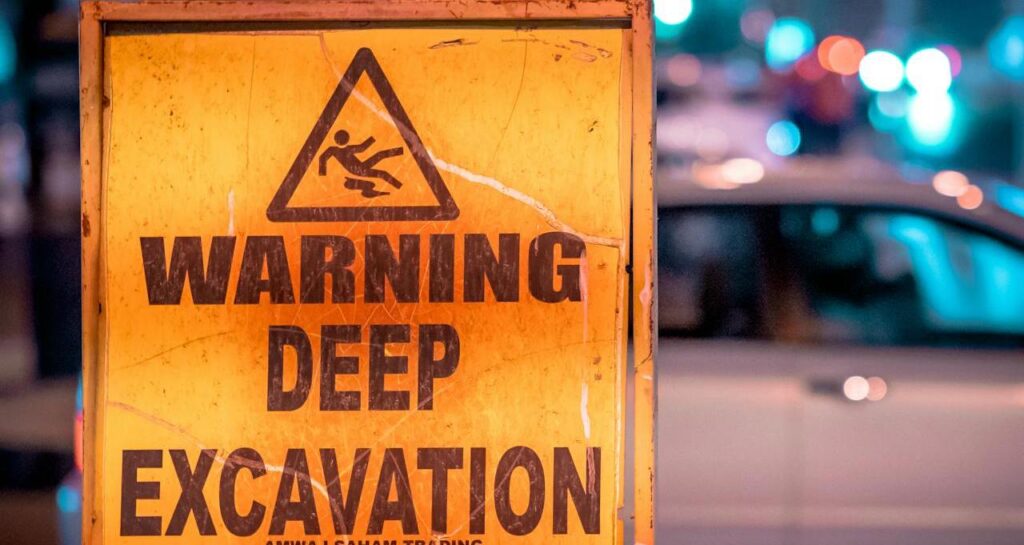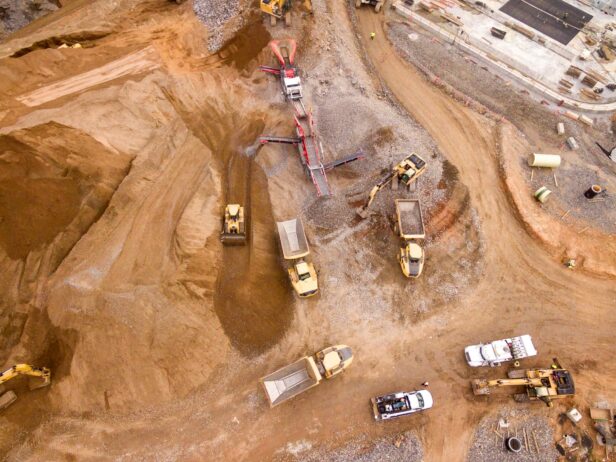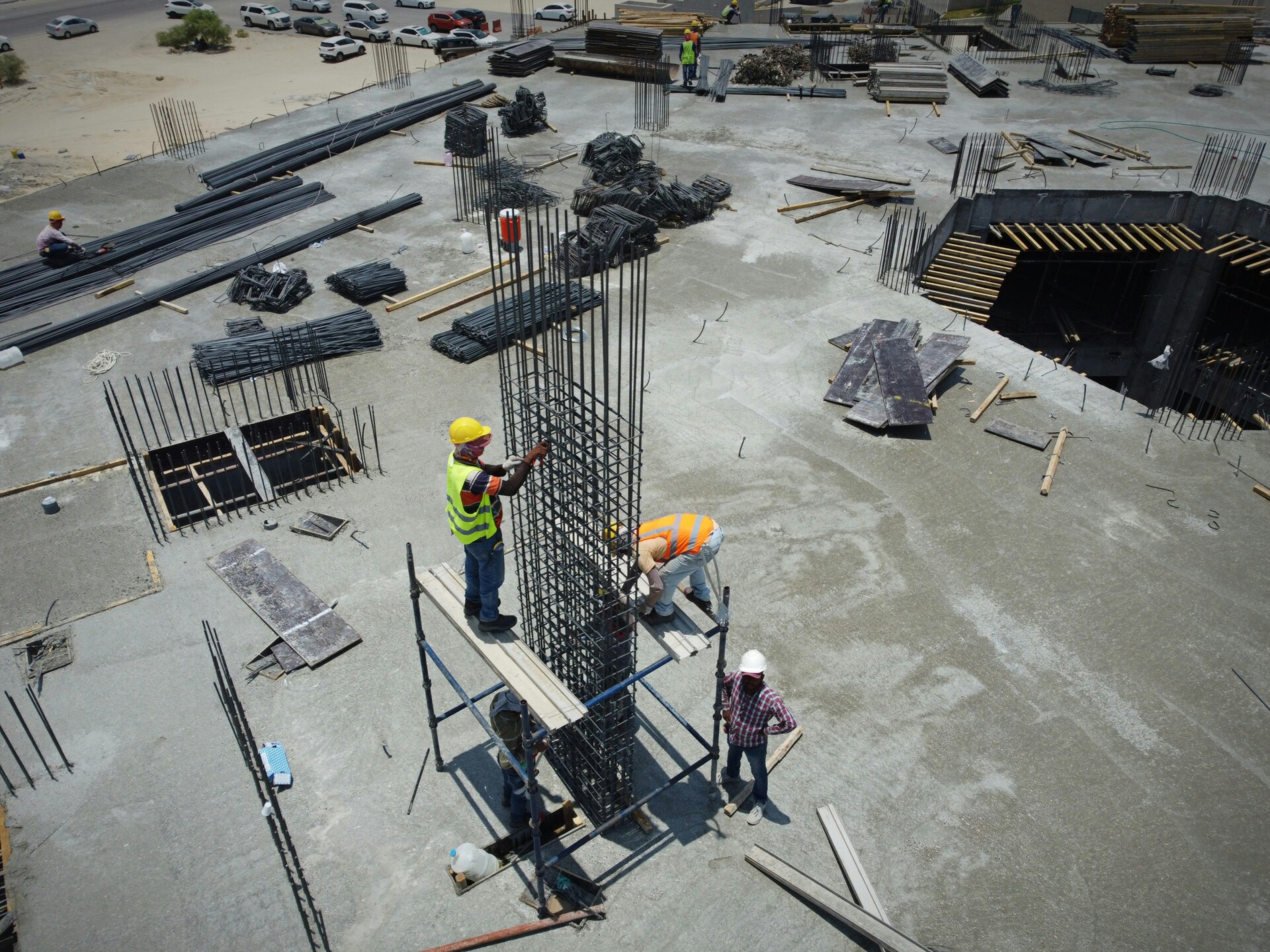One cubic yard of soil weighs as much as a car. When that mass breaks free from an excavation wall, workers have seconds to escape before becoming trapped or killed.
OSHA 29 CFR 1926 Subpart P governs all deep excavation work, including trenches where depth exceeds width. These regulations establish mandatory protective systems, competent person inspections, and hazard controls that address the deadliest risks we face in underground construction.
Which OSHA Thresholds And Triggers Apply To Deep Excavation Work?

We navigate specific depth triggers that determine when certain protections must kick in under OSHA 29 CFR 1926 Subpart P. These thresholds create clear action points for our field teams, establishing mandatory safety measures at predictable intervals based on excavation depth and conditions.
Understanding these triggers allows us to plan protective systems during the design phase rather than scrambling to implement them after excavation begins. The regulations establish five key thresholds that every contractor working in excavations must follow.
The Five-Foot Protection Rule
Any trench 5 feet or deeper requires a protective system unless we excavate entirely in stable rock. This rule forms the foundation of excavation safety, recognizing that soil instability increases significantly once we reach this depth threshold.
Stable rock presents the only exception to this requirement. We must verify that the rock formation remains intact during exposure and shows no signs of cracking or weathering that could compromise stability. Most projects encounter mixed soil conditions where this exception rarely applies.
For trenches under 5 feet, a competent person can determine whether protective systems are still necessary based on soil conditions and other risk factors. Even shallow excavations may require protection if the soil shows signs of instability or if water conditions create additional hazards.
Engineering Requirements At Twenty Feet
Once we reach 20 feet in depth, protective systems must be designed by a registered professional engineer or utilize approved tabulated data that an engineer has prepared or approved. This threshold recognizes the complex soil mechanics and loading conditions present in deeper excavations.
The engineering requirement ensures that protective systems can handle the increased earth pressures and potential failure modes that develop at greater depths. We cannot rely on standard tables or rules of thumb beyond this point without professional engineering oversight.
Tabulated data provides an alternative to custom design, but only when an engineer has specifically approved the data for the soil conditions and excavation parameters we encounter on our project. The engineer’s approval must be documented and available at the worksite.
Access And Egress At Four Feet
We must provide safe means of entry and exit for any trench 4 feet or deeper. This includes ladders, steps, ramps, or other approved access methods positioned so workers travel no more than 25 feet laterally to reach them.
Ladder placement follows specific requirements: they must extend at least 3 feet above the landing and be properly secured against movement. We space multiple access points based on the 25-foot lateral travel rule, ensuring workers can quickly exit from any location along the trench.
Structural ramps require competent person approval for worker access or qualified structural design approval when vehicles will use them. The access method must accommodate both normal work activities and emergency evacuation scenarios.
Two-Foot Spoil And Material Setback
All spoil piles, materials, and equipment must remain at least 2 feet back from excavation edges. This setback prevents surcharge loading on the trench walls and reduces the risk of materials falling into the excavation where workers are present.
Heavy equipment requires additional consideration beyond the 2-foot minimum. We evaluate the specific loads and vibration effects each piece of equipment creates, potentially requiring greater setback distances or additional protective measures.
The setback applies to all materials that could create additional loading on the excavation walls or pose falling object hazards. This includes pipe, fittings, tools, and any temporary storage areas we establish near the work zone.
Competent Person Oversight
Every excavation project requires at least one competent person with the training and authority to identify hazards and implement corrective measures. This individual conducts daily inspections and additional inspections whenever conditions change.
The competent person classifies soil types, monitors protective systems, and has the authority to remove workers from hazardous conditions until we address the problems. Their inspection responsibilities extend beyond the excavation itself to include adjacent areas and potential hazard sources.
Daily inspection records must be maintained on site, documenting the competent person’s findings and any corrective actions taken. These records demonstrate our compliance with regulatory requirements and provide valuable documentation for project management.
Atmospheric Testing Requirements
We test for hazardous atmospheres in trenches 4 feet or deeper, or whenever conditions suggest atmospheric hazards may be present. Testing occurs before workers enter and continues as needed throughout the work shift.
Atmospheric hazards include oxygen deficiency, combustible gases, and toxic substances that may accumulate in excavations. We provide appropriate ventilation or respiratory protection when testing reveals unsafe conditions.
Emergency rescue equipment must be readily available when atmospheric hazards exist or could develop. This includes breathing apparatus, safety harnesses, lifelines, and basket stretchers attended by trained personnel during use.
Water Accumulation Controls
Workers cannot enter excavations where water has accumulated unless we implement adequate protective measures and monitoring. OSHA excavation standards require competent person oversight of any water removal equipment we deploy.
Dewatering systems, diversion ditches, and drainage measures help control water intrusion. We remove workers during rainstorms and conduct thorough inspections before allowing re-entry to ensure continued safe conditions.
The competent person monitors water removal equipment operation and evaluates whether changing conditions require additional protective measures or work suspension until conditions improve.
How Do Protective Systems (Sloping, Benching, Shoring, Shielding) Meet The Rules?
OSHA provides four primary protective systems for deep excavation work: sloping, benching, shoring, and shielding through trench boxes. Each system addresses specific soil conditions and excavation depths to prevent cave-ins and protect workers.
Sloping Requirements By Soil Classification
Type A soil allows the steepest slopes with a maximum allowable slope of 3/4 horizontal to 1 vertical, approximately 53 degrees from horizontal. We establish these slopes by cutting the excavation walls at an angle that prevents soil collapse while maintaining structural stability.
Type B soil requires more gradual sloping with a maximum allowable slope of 1 horizontal to 1 vertical, or 45 degrees. This classification covers cohesive soils with moderate strength properties that need additional safety margins.
Type C soil presents the highest risk and demands the most conservative approach with a maximum allowable slope of 1.5 horizontal to 1 vertical, approximately 34 degrees. These soils include granular materials like sand and gravel that offer minimal cohesion.
Benching System Specifications
Benching creates horizontal steps in the excavation wall to distribute soil pressure and reduce the risk of large-scale collapses. The first bench at the bottom cannot exceed 4 feet in vertical height for initial stability.
Subsequent benches follow specific height limits based on soil type. Type A soil permits benches up to 5 feet vertical, while Type B soil restricts additional benches to 4 feet maximum vertical height. We apply these systems only to cohesive soils, as Type C materials lack sufficient strength for benching applications.
All benching configurations must remain within the maximum allowable slope for the specific soil type. The total excavation depth under standard benching tables cannot exceed 20 feet without registered professional engineer involvement.
Shielding And Trench Box Applications
Trench boxes provide portable protection that moves with excavation progress rather than supporting the soil walls. We minimize the gap between the shield and trench face to prevent soil intrusion while allowing necessary working clearances.
Backfilling around the boxes prevents lateral movement that could compromise worker protection. When excavations slope toward the cut, boxes must extend above the surrounding grade to maintain coverage.
Limited excavation below shield systems is permitted up to 2 feet, but only when the shield design accounts for full trench depth forces. We monitor continuously for soil loss indicators behind or below the protective system.
| Soil Type | Height:Depth Ratio | Slope Angle | Bench Height Limit |
|---|---|---|---|
| Stable Rock | Vertical | 90° | Not Applicable |
| Type A | ¾:1 | 53° | 5 ft |
| Type B | 1:1 | 45° | 4 ft |
| Type C | 1½:1 | 34° | Not permitted |
| Type A (short-term) | ½:1 | 63° | Not Applicable |
Aluminum Hydraulic Shoring Systems
Aluminum hydraulic shoring represents the most common active support system for trench walls. We install these systems from the top down to maintain worker safety during placement and remove them from the bottom up during backfilling operations.
Daily component inspections check for hydraulic leaks, damaged cylinders, and bent structural members. The gauge-regulated pressure distribution ensures uniform loading along the trench line while allowing preloading to engage the soil’s natural cohesion properties.
These systems adapt easily to varying trench dimensions and provide critical safety advantages by eliminating the need for workers to enter unprotected excavations during installation or removal phases.
What Planning And Inspection Duties Does A Competent Person Perform?

The competent person serves as the backbone of excavation safety, overseeing both initial planning and ongoing inspection responsibilities. We structure our deep excavation projects around these essential duties to maintain compliance and protect workers throughout the construction process.
Pre-Work Planning Responsibilities
Before breaking ground, we assign and train a qualified competent person who can identify hazards and take corrective action. This individual evaluates soil conditions using visual and manual tests to determine soil type and stability factors. The competent person coordinates with utility location services by calling 811, then marks all identified underground installations before excavation begins.
Planning extends to spoil pile locations and equipment routing to prevent overloading trench edges. For excavations 5 feet or deeper, the competent person selects appropriate protective systems based on soil classification and site conditions. When depths reach 20 feet or more, OSHA requires engineered protection systems designed by registered professional engineers.
We establish traffic control plans to protect workers and manage vehicle movement around excavations. Emergency action plans address rescue procedures, equipment placement, and communication protocols for potential incidents. These planning steps create the foundation for safe excavation operations.
Daily Inspection And Classification Duties
During active work, the competent person classifies soil conditions and monitors changes that affect trench stability. Daily inspections occur before each shift and whenever conditions change due to rain, thaw, vibration, or other factors. The competent person examines protective systems for damage, proper installation, and continued effectiveness.
Critical inspection points include checking for tension cracks, bulging at trench bottom, water seepage, and soil movement. When designing or approving structural ramps for equipment or worker access, the competent person ensures adequate load capacity and proper construction. Any hazardous conditions require immediate worker removal until corrections are implemented.
Water removal equipment receives ongoing monitoring to verify proper operation and effectiveness. We maintain daily inspection records on site, documenting soil conditions, weather impacts, system performance, and corrective actions taken. This documentation demonstrates compliance and provides valuable information for ongoing safety management throughout the excavation process.
How Are Access, Atmospheres, Water, And Site Controls Managed In Deep Excavations?
Access And Egress Requirements
We provide safe entry and exit paths within 25 feet of lateral travel for all excavations 4 feet or deeper. Ladders remain the most practical option for most construction sites. Each ladder must extend at least 3 feet above the landing surface and be properly secured to prevent displacement.
Structural ramps work best for equipment access and high-traffic areas. We design these ramps with anti-slip surfaces and proper cleating to prevent accidents. When multiple workers need access simultaneously, we install double-cleated ladders or provide separate access points to avoid congestion during emergency evacuations.
Atmospheric Hazard Testing And Control
We test air quality before any worker enters trenches 4 feet deep or where hazardous conditions might exist. Gas detection equipment checks for oxygen deficiency, toxic gases, and flammable vapors near pipelines or waste systems. Testing continues throughout the shift when conditions warrant ongoing monitoring.
Ventilation systems become necessary when atmospheric hazards are detected. We use forced ventilation to maintain safe oxygen levels above 19.5 percent and keep flammable gases below 10 percent of their lower explosive limit. Respiratory protection serves as backup when ventilation alone cannot maintain safe conditions.
For deep, confined footing excavations, we equip workers with safety harnesses and lifelines connected to retrieval systems. An attendant remains topside with emergency rescue equipment including breathing apparatus and basket stretchers ready for immediate deployment.
Water Management And Dewatering
We never allow work in excavations with accumulated water unless proper protections are in place. Dewatering systems using well-point installations or sump pumps remove groundwater before it destabilizes soil conditions. These systems require continuous monitoring by trained personnel.
Diversion ditches redirect surface water around excavation areas to prevent runoff from entering the work zone. During rainstorms, we remove all workers immediately and conduct thorough re-inspections afterward. The competent person evaluates whether additional protective measures are needed before work resumes.
Water removal equipment must be sized appropriately for expected flow rates and maintained according to manufacturer specifications. We keep backup pumps on-site for critical excavations where water intrusion poses immediate safety risks.
Site Traffic And Material Controls
All excavated materials and construction supplies remain at least 2 feet from excavation edges to prevent surcharge loading on trench faces. Heavy equipment operates with designated travel paths that avoid proximity to excavation edges. When equipment must work near excavations, we install stop logs and warning systems to alert operators.
Barricades and warning signs protect both workers and the public from excavation hazards. High-visibility vests are mandatory for all personnel working near mobile equipment or public traffic areas. We establish clear sight lines between equipment operators and ground personnel through proper positioning and communication protocols.
Loading and unloading operations require workers to maintain safe distances from lifted loads. No one works beneath suspended materials or digging equipment buckets. These simple rules prevent struck-by accidents that frequently occur during material handling activities near excavations.
Conclusion And Next Steps

Following deep excavation regulations requires systematic planning and consistent execution of safety protocols throughout each project. We combine comprehensive soil classification with appropriate protective system selection to meet both the 5-foot and 20-foot regulatory thresholds. Our approach includes securing proper access and egress routes, maintaining adequate spoil distances, implementing water control measures, and conducting hazardous atmosphere testing when conditions warrant.
Documentation and daily competent person inspections form the backbone of OSHA Subpart P compliance. We maintain all required records on site, from soil classification reports to daily inspection logs and protective system specifications. This systematic approach to excavation safety helps us prevent cave-ins, protect workers, and maintain regulatory compliance across all deep excavation operations.
Ready to ensure your next excavation project meets OSHA standards? Contact EB3 to discuss your excavation safety requirements.




